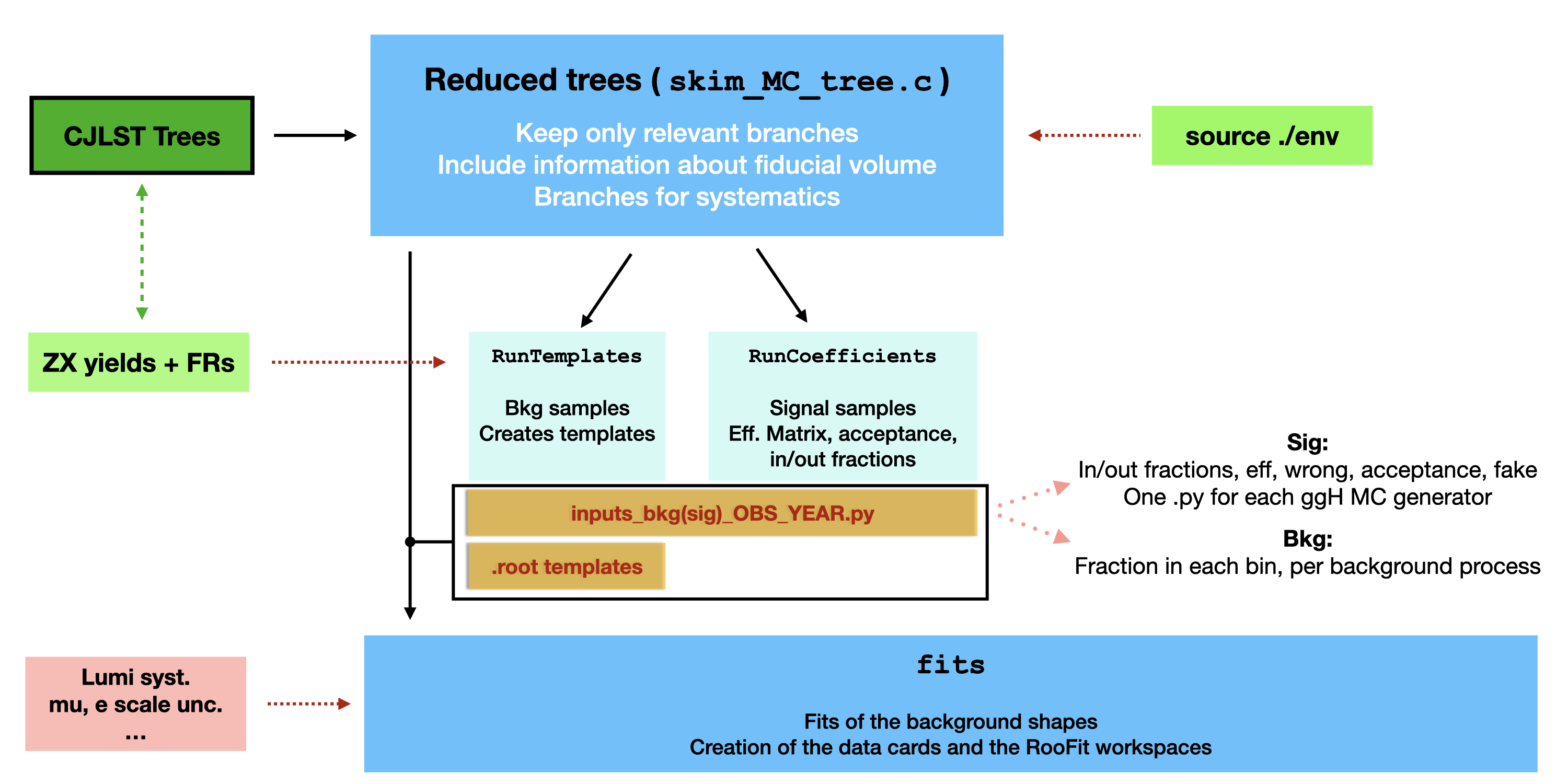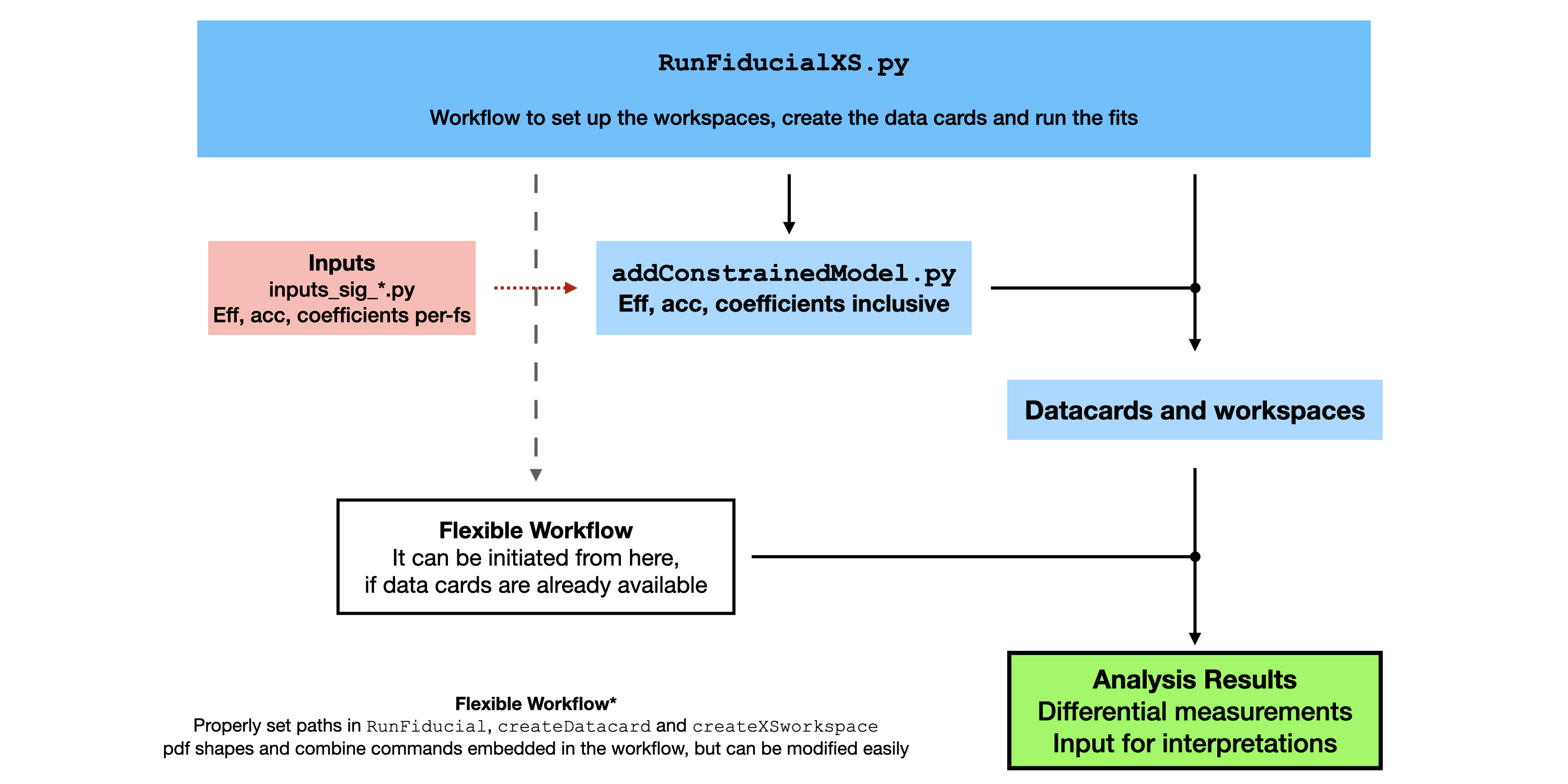Standalone framework for fiducial differential cross section measurements using CJLST TTrees for Run 2 data.
A CMSSW working area with the latest version of combine is required:
export SCRAM_ARCH=slc7_amd64_gcc700
cmsrel CMSSW_10_2_13
cd CMSSW_10_2_13/src
cmsenv
git clone https://github.com/cms-analysis/HiggsAnalysis-CombinedLimit.git HiggsAnalysis/CombinedLimit
cd HiggsAnalysis/CombinedLimit
git fetch origin
git checkout v8.1.0
scramv1 b clean; scramv1 b
The PhysicsModel(s) used in this analysis (cf. fit/createDatacard.py) can be found in the models folder. Please copy them in $CMSSW_VERSION/src/HiggsAnalysis/CombinedLimit/python before running the scipts in fit.
A schematic representation of the framework's worflow is given in the two following sketches:
The input files of the analysis workflow are the HZZ4L ntuples generated with the CJLST framework. This framework starts from those files and:
config: Starting from CJLST TTrees, only relevant branches are selected and stored byskim_MC_tree.Candskim_data_tree.Cmacros.
Having created these skimmed TTrees, the next steps of the analysis involve the caluclation of the different coefficients needed for the pdf parameterisations and unfolding, as well as the creation of background templates. To do so:
templates: Templates and normalization coefficients for the backgrounds' pdf are extracted from MC (ggZZ and qqZZ) and data (ZX) usingRunTemplates.pycoefficients: All the coefficients of the signal parameterization are calculated withRunCoefficients.pyand stored ininputsfolder.fit: The maximum likelihood fit is performed. This step relies on theRunFiducialXS.pyscript and it can be run either as part of the entire framework, creating the datacards and workspaces from scratch, or using pre-existing datacars as input. Datacards are produced and stored in adatacarddirectory, while fit results (combine.rootfiles) are stored incombine_filesfolder.
Additional scripts are provided to plot negative log-likelihood scans and to produce the usual differential xsec plots:
LHScans: Likelihood scans are plotted, best-fit values and the corresponding uncertainties are calculated usingplotLHScans_compare.py.producePlots.py: Plot of unfolded differential xsec distributions.

